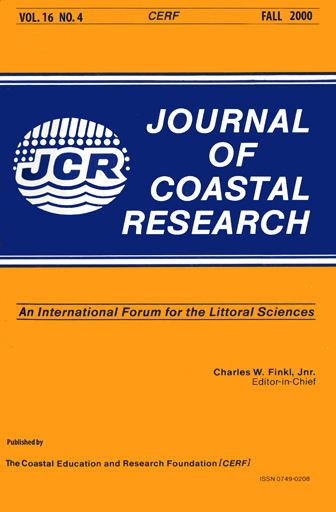An Experimental Investigation of Broken Wave over Mud Bed
Keywords:
Surf zone, roller size, dissipation, undertow, turbulenceAbstract
The physical nature of the beach profile, wave condition and sediment property of muddy coast are different from those of sandy coast. At muddy coast, which is characterized by almost flat or horizontal bed close to the shore line, wave can break with significantly low value of the incipient breaker height to water depth ratio. The effect of reduced incipient breaker height on surf zone dynamics are not known when wave break with spilling action. For the purpose of correct estimation of the coastal process at muddy coast, it is important to know the dynamics of surf zone in comparison to that of sand coast. In the present study, the hydrodynamics under breaking wave over mud bed has been examined by carrying out a number of laboratory experiments. The dissipation of wave, velocity and turbulence field was observed for varying wave conditions over flat and very mildly sloped beds. The incipient wave breaking condition was found to be the most important parameter to characterize the surf zone dynamics over mud bed. The contribution of mud bed to dissipation of broken wave was determined by observing the nature of wave decay over rigid bed. The size of the surface roller, which is typically considered as constant, was found reduced with the decrease of incipient breaker height over flat bed. The mean velocity and turbulent energy was significantly dependent on the beaker height to water depth ratio. The vertical transfer of turbulence was higher when the bed was sloped in comparison to the case of horizontal bed.Downloads
Published
2000-10-28
Issue
Section
Articles


